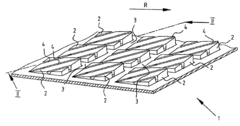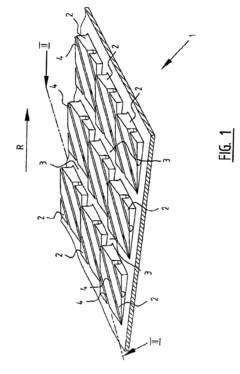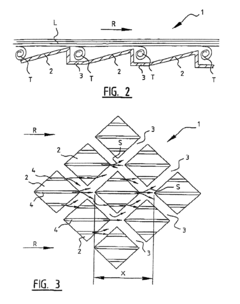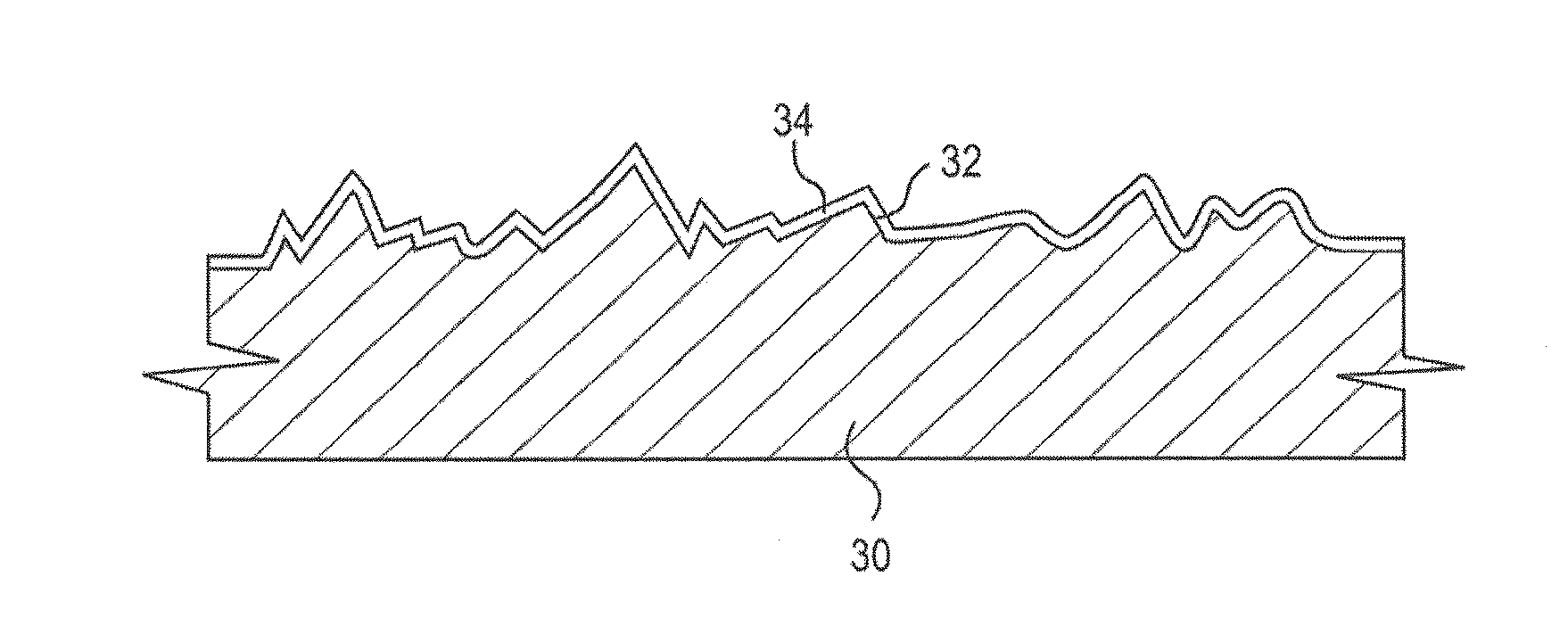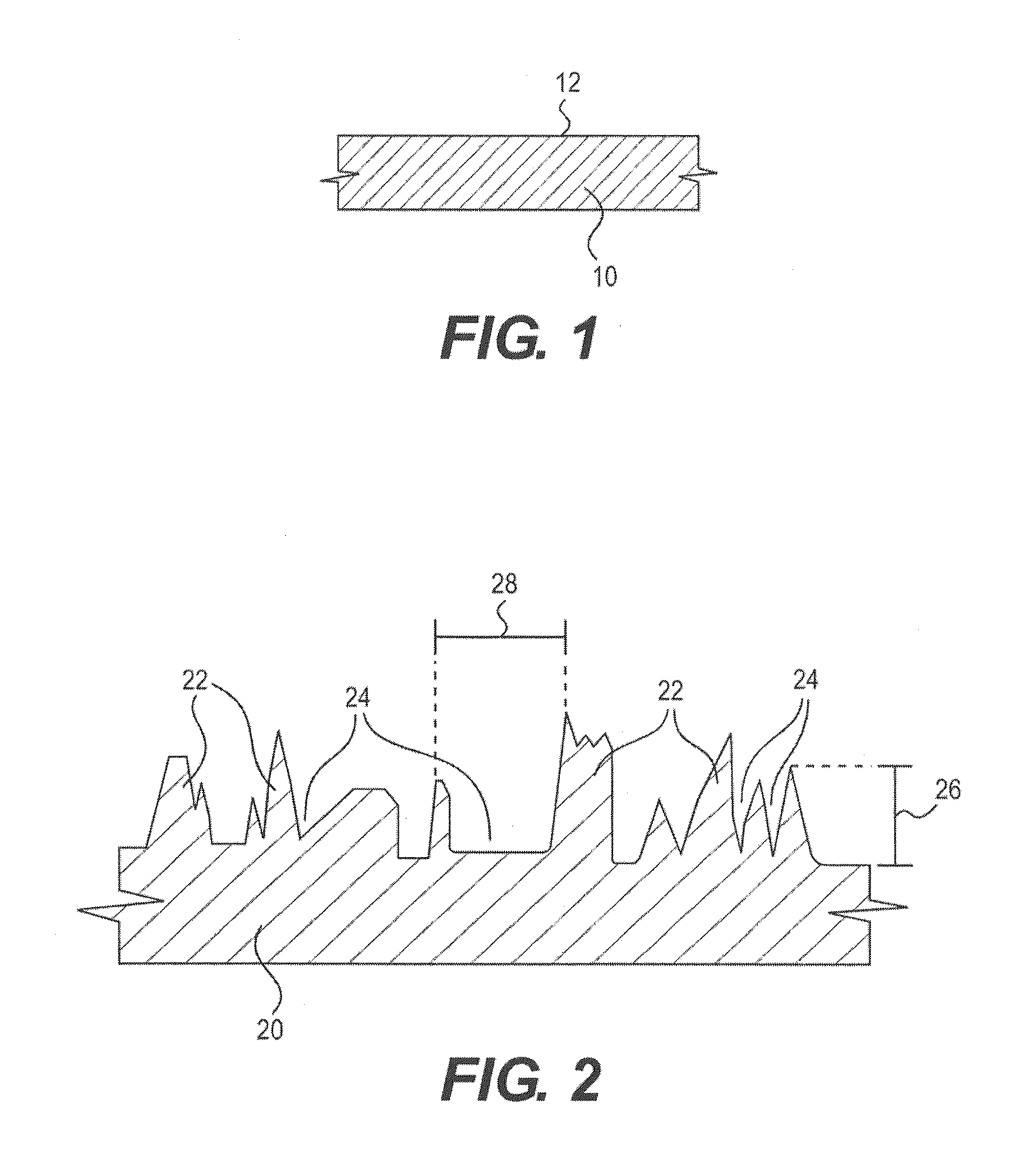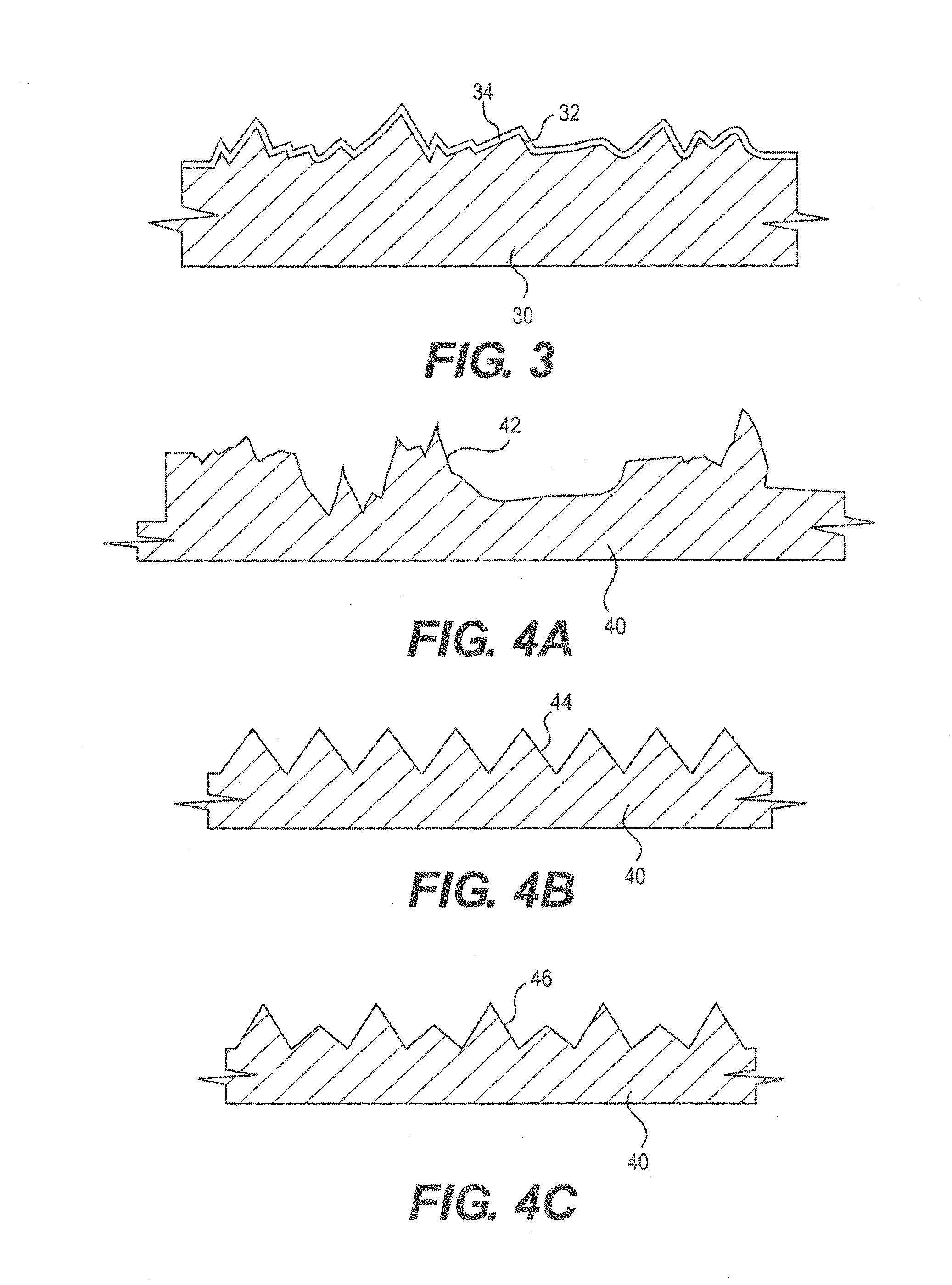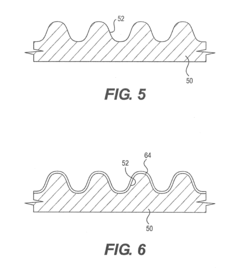How to Minimize Air Resistance with Laminar Flow?
JUL 10, 20259 MIN READ
Generate Your Research Report Instantly with AI Agent
Patsnap Eureka helps you evaluate technical feasibility & market potential.
Laminar Flow Fundamentals and Objectives
Laminar flow, a fundamental concept in fluid dynamics, refers to the smooth, predictable motion of fluid particles in parallel layers without mixing or turbulence. This phenomenon plays a crucial role in minimizing air resistance, making it a key focus for engineers and researchers across various industries. The study of laminar flow dates back to the 19th century, with significant advancements made in understanding its principles and applications throughout the 20th and 21st centuries.
The primary objective in utilizing laminar flow to minimize air resistance is to create a streamlined environment where air molecules move in orderly, parallel paths around an object. This reduces friction and drag, ultimately leading to improved energy efficiency and performance in applications ranging from automotive design to aerospace engineering. By maintaining laminar flow, engineers aim to delay the transition to turbulent flow, which significantly increases air resistance and energy consumption.
To achieve this goal, researchers and engineers focus on several key areas. First, they strive to optimize surface geometries to promote laminar flow. This involves creating smooth, continuous surfaces that guide air molecules along predictable paths. Second, they explore materials and coatings that can reduce surface roughness and minimize disruptions to the airflow. Third, they investigate active flow control techniques, such as suction or blowing, to manipulate the boundary layer and maintain laminar flow over larger areas.
The evolution of computational fluid dynamics (CFD) has greatly enhanced our ability to study and predict laminar flow behavior. Advanced simulation tools allow engineers to model complex airflow patterns and optimize designs before physical prototyping. This has accelerated the development of more efficient vehicles, aircraft, and wind turbines, among other applications.
Recent technological advancements have opened new avenues for laminar flow research. Nanotechnology, for instance, offers the potential to create surfaces with unprecedented smoothness at the molecular level. Biomimicry, inspired by nature's solutions to fluid dynamics challenges, has led to innovative designs that mimic the skin of sharks or the texture of lotus leaves to enhance laminar flow characteristics.
As we look to the future, the objectives for laminar flow research continue to evolve. Engineers aim to extend the range of conditions under which laminar flow can be maintained, particularly at higher speeds and in more complex geometries. There is also a growing focus on developing adaptive systems that can dynamically adjust to changing flow conditions, ensuring optimal performance across various operational scenarios.
The primary objective in utilizing laminar flow to minimize air resistance is to create a streamlined environment where air molecules move in orderly, parallel paths around an object. This reduces friction and drag, ultimately leading to improved energy efficiency and performance in applications ranging from automotive design to aerospace engineering. By maintaining laminar flow, engineers aim to delay the transition to turbulent flow, which significantly increases air resistance and energy consumption.
To achieve this goal, researchers and engineers focus on several key areas. First, they strive to optimize surface geometries to promote laminar flow. This involves creating smooth, continuous surfaces that guide air molecules along predictable paths. Second, they explore materials and coatings that can reduce surface roughness and minimize disruptions to the airflow. Third, they investigate active flow control techniques, such as suction or blowing, to manipulate the boundary layer and maintain laminar flow over larger areas.
The evolution of computational fluid dynamics (CFD) has greatly enhanced our ability to study and predict laminar flow behavior. Advanced simulation tools allow engineers to model complex airflow patterns and optimize designs before physical prototyping. This has accelerated the development of more efficient vehicles, aircraft, and wind turbines, among other applications.
Recent technological advancements have opened new avenues for laminar flow research. Nanotechnology, for instance, offers the potential to create surfaces with unprecedented smoothness at the molecular level. Biomimicry, inspired by nature's solutions to fluid dynamics challenges, has led to innovative designs that mimic the skin of sharks or the texture of lotus leaves to enhance laminar flow characteristics.
As we look to the future, the objectives for laminar flow research continue to evolve. Engineers aim to extend the range of conditions under which laminar flow can be maintained, particularly at higher speeds and in more complex geometries. There is also a growing focus on developing adaptive systems that can dynamically adjust to changing flow conditions, ensuring optimal performance across various operational scenarios.
Market Demand for Low-Drag Applications
The market demand for low-drag applications has been steadily increasing across various industries, driven by the need for improved energy efficiency, reduced operational costs, and enhanced performance. In the automotive sector, manufacturers are constantly seeking ways to minimize air resistance to improve fuel economy and extend the range of electric vehicles. This has led to a surge in research and development efforts focused on laminar flow technologies and aerodynamic design optimization.
The aerospace industry represents another significant market for low-drag applications. Commercial airlines are under pressure to reduce fuel consumption and carbon emissions, making laminar flow control a key area of interest. Military aviation also benefits from reduced drag, as it can lead to increased range, speed, and maneuverability for aircraft and missiles.
In the renewable energy sector, wind turbine manufacturers are exploring ways to minimize air resistance on turbine blades to increase energy production efficiency. This has created a growing demand for advanced materials and surface treatments that can maintain laminar flow conditions over larger areas.
The marine industry is another major market for low-drag technologies. Ship operators are increasingly looking for ways to reduce fuel consumption and improve vessel performance. Laminar flow hull designs and coatings that minimize water resistance are becoming more prevalent in both commercial and military naval applications.
Sports equipment manufacturers have also recognized the potential of laminar flow technologies. From cycling to swimming, reducing air or water resistance can provide a competitive edge. This has led to increased investment in research and development of low-drag materials and designs for athletic gear and apparel.
The transportation and logistics sector is showing growing interest in low-drag solutions for trucks, trains, and other freight vehicles. As fuel costs and environmental regulations become more stringent, the ability to minimize air resistance during long-haul journeys can result in significant cost savings and reduced emissions.
In the field of high-performance computing, data centers are exploring ways to minimize air resistance in cooling systems. This can lead to more efficient heat dissipation and reduced energy consumption for cooling, addressing the growing concern of power usage in large-scale computing facilities.
As environmental concerns continue to drive policy and consumer behavior, the market demand for low-drag applications is expected to grow further. Industries are increasingly recognizing the long-term benefits of investing in laminar flow technologies, not only for cost savings but also for meeting sustainability goals and regulatory requirements.
The aerospace industry represents another significant market for low-drag applications. Commercial airlines are under pressure to reduce fuel consumption and carbon emissions, making laminar flow control a key area of interest. Military aviation also benefits from reduced drag, as it can lead to increased range, speed, and maneuverability for aircraft and missiles.
In the renewable energy sector, wind turbine manufacturers are exploring ways to minimize air resistance on turbine blades to increase energy production efficiency. This has created a growing demand for advanced materials and surface treatments that can maintain laminar flow conditions over larger areas.
The marine industry is another major market for low-drag technologies. Ship operators are increasingly looking for ways to reduce fuel consumption and improve vessel performance. Laminar flow hull designs and coatings that minimize water resistance are becoming more prevalent in both commercial and military naval applications.
Sports equipment manufacturers have also recognized the potential of laminar flow technologies. From cycling to swimming, reducing air or water resistance can provide a competitive edge. This has led to increased investment in research and development of low-drag materials and designs for athletic gear and apparel.
The transportation and logistics sector is showing growing interest in low-drag solutions for trucks, trains, and other freight vehicles. As fuel costs and environmental regulations become more stringent, the ability to minimize air resistance during long-haul journeys can result in significant cost savings and reduced emissions.
In the field of high-performance computing, data centers are exploring ways to minimize air resistance in cooling systems. This can lead to more efficient heat dissipation and reduced energy consumption for cooling, addressing the growing concern of power usage in large-scale computing facilities.
As environmental concerns continue to drive policy and consumer behavior, the market demand for low-drag applications is expected to grow further. Industries are increasingly recognizing the long-term benefits of investing in laminar flow technologies, not only for cost savings but also for meeting sustainability goals and regulatory requirements.
Current Challenges in Air Resistance Reduction
Despite significant advancements in aerodynamics, reducing air resistance remains a critical challenge in various industries, particularly in transportation and energy sectors. The pursuit of laminar flow to minimize air resistance faces several key obstacles that researchers and engineers are actively working to overcome.
One of the primary challenges is maintaining laminar flow over extended surfaces. As air flows over a surface, it naturally tends to transition from laminar to turbulent flow, especially at higher speeds or over longer distances. This transition significantly increases drag and negates the benefits of laminar flow. Developing methods to delay or prevent this transition is crucial for effective air resistance reduction.
Surface imperfections pose another significant hurdle. Even microscopic irregularities can trigger premature transition to turbulent flow. Achieving and maintaining the extremely smooth surfaces required for laminar flow is technically demanding and often economically challenging, particularly for large-scale applications like aircraft or wind turbines.
Environmental factors such as atmospheric turbulence, temperature variations, and precipitation further complicate the maintenance of laminar flow. These external disturbances can disrupt the delicate balance required for laminar flow, necessitating adaptive systems that can respond to changing conditions in real-time.
The integration of laminar flow control systems into existing designs presents both technical and practical challenges. Active systems, such as suction or blowing mechanisms to manipulate the boundary layer, require complex infrastructure and energy input, potentially offsetting the gains in efficiency. Passive systems, while less complex, often struggle to provide consistent performance across varying operational conditions.
Scaling laminar flow solutions from laboratory conditions to real-world applications remains a significant challenge. What works effectively in controlled environments may not translate directly to practical use due to the complex interplay of factors in real-world scenarios.
Moreover, the computational modeling and simulation of laminar flow systems present their own set of challenges. Accurately predicting the behavior of air flow, especially in transitional regimes between laminar and turbulent flow, requires sophisticated models and significant computational resources.
Lastly, the economic viability of implementing advanced laminar flow technologies is a persistent challenge. The potential benefits in terms of reduced fuel consumption or increased efficiency must be weighed against the costs of research, development, and implementation. This cost-benefit analysis often hinders the widespread adoption of cutting-edge laminar flow solutions, particularly in industries with tight profit margins.
One of the primary challenges is maintaining laminar flow over extended surfaces. As air flows over a surface, it naturally tends to transition from laminar to turbulent flow, especially at higher speeds or over longer distances. This transition significantly increases drag and negates the benefits of laminar flow. Developing methods to delay or prevent this transition is crucial for effective air resistance reduction.
Surface imperfections pose another significant hurdle. Even microscopic irregularities can trigger premature transition to turbulent flow. Achieving and maintaining the extremely smooth surfaces required for laminar flow is technically demanding and often economically challenging, particularly for large-scale applications like aircraft or wind turbines.
Environmental factors such as atmospheric turbulence, temperature variations, and precipitation further complicate the maintenance of laminar flow. These external disturbances can disrupt the delicate balance required for laminar flow, necessitating adaptive systems that can respond to changing conditions in real-time.
The integration of laminar flow control systems into existing designs presents both technical and practical challenges. Active systems, such as suction or blowing mechanisms to manipulate the boundary layer, require complex infrastructure and energy input, potentially offsetting the gains in efficiency. Passive systems, while less complex, often struggle to provide consistent performance across varying operational conditions.
Scaling laminar flow solutions from laboratory conditions to real-world applications remains a significant challenge. What works effectively in controlled environments may not translate directly to practical use due to the complex interplay of factors in real-world scenarios.
Moreover, the computational modeling and simulation of laminar flow systems present their own set of challenges. Accurately predicting the behavior of air flow, especially in transitional regimes between laminar and turbulent flow, requires sophisticated models and significant computational resources.
Lastly, the economic viability of implementing advanced laminar flow technologies is a persistent challenge. The potential benefits in terms of reduced fuel consumption or increased efficiency must be weighed against the costs of research, development, and implementation. This cost-benefit analysis often hinders the widespread adoption of cutting-edge laminar flow solutions, particularly in industries with tight profit margins.
Existing Laminar Flow Control Methods
01 Aerodynamic design for reducing air resistance
Implementing aerodynamic designs in various structures and vehicles to minimize air resistance during laminar flow. This includes streamlined shapes, smooth surfaces, and optimized contours to reduce drag and improve overall efficiency in applications ranging from transportation to industrial equipment.- Aerodynamic design for reducing air resistance: Implementing aerodynamic designs in various structures and vehicles to minimize air resistance during laminar flow. This includes streamlined shapes, smooth surfaces, and optimized contours to reduce drag and improve overall efficiency in applications such as aircraft, automobiles, and wind turbines.
- Flow control mechanisms for laminar airflow: Utilizing specialized mechanisms and devices to control and maintain laminar airflow, reducing turbulence and air resistance. These may include vortex generators, boundary layer control systems, and active flow control technologies to enhance performance in aerospace and automotive applications.
- Surface treatments for reducing friction: Applying various surface treatments and coatings to reduce friction between the air and the object's surface during laminar flow. This can involve the use of specialized materials, textures, or micro-structures to minimize drag and improve overall aerodynamic performance.
- Measurement and analysis of laminar flow air resistance: Developing and implementing methods and instruments for accurately measuring and analyzing air resistance in laminar flow conditions. This includes the use of sensors, wind tunnels, and computational fluid dynamics (CFD) simulations to optimize designs and improve performance in various applications.
- Cooling systems utilizing laminar airflow: Designing cooling systems that leverage laminar airflow to improve heat dissipation and reduce energy consumption. This involves optimizing air circulation patterns, vent designs, and fan configurations to enhance cooling efficiency in electronic devices, HVAC systems, and industrial equipment.
02 Flow control mechanisms in laminar airflow systems
Utilizing specialized mechanisms and devices to control and maintain laminar airflow in various applications. This involves the use of flow straighteners, baffles, and other components to regulate air movement and minimize turbulence, particularly in sensitive environments such as clean rooms or precision manufacturing facilities.Expand Specific Solutions03 Thermal management in laminar flow environments
Developing thermal management solutions for systems operating in laminar flow conditions. This includes innovative cooling techniques, heat dissipation methods, and temperature control strategies to maintain optimal performance and efficiency in electronic devices, industrial equipment, and other heat-sensitive applications.Expand Specific Solutions04 Measurement and analysis of laminar flow characteristics
Employing advanced techniques and instruments for measuring and analyzing laminar flow properties and air resistance. This involves the use of sensors, flow meters, and computational methods to accurately assess flow patterns, velocity profiles, and drag coefficients in various experimental and practical scenarios.Expand Specific Solutions05 Material selection for laminar flow applications
Choosing appropriate materials and surface treatments to enhance laminar flow properties and reduce air resistance. This includes the use of low-friction coatings, specialized polymers, and engineered surfaces to minimize drag and improve overall system performance in aerospace, automotive, and industrial applications.Expand Specific Solutions
Key Players in Aerodynamics Industry
The competition landscape for minimizing air resistance with laminar flow is characterized by a mature market with significant ongoing research and development. Major players like Boeing, Airbus, and NASA are at the forefront, leveraging decades of aerospace expertise. The market size is substantial, driven by the aviation industry's constant pursuit of fuel efficiency. Technological maturity varies, with established companies like Boeing and Airbus implementing advanced laminar flow solutions in commercial aircraft, while research institutions such as NASA and universities continue to explore innovative approaches. Emerging players like Mitsubishi Shipbuilding are also entering the field, diversifying applications beyond aerospace into maritime sectors.
The Boeing Co.
Technical Solution: Boeing has developed advanced laminar flow control (LFC) technologies to minimize air resistance. Their approach includes a combination of passive and active systems. The passive system involves carefully designed airfoil shapes and smooth surface finishes to maintain laminar flow over larger portions of the wing. The active system uses suction through tiny perforations on the wing surface to remove the boundary layer, preventing turbulent transition[1][3]. Boeing has also experimented with hybrid laminar flow control (HLFC) on the 787-9 Dreamliner, which combines natural laminar flow with active suction systems, potentially reducing fuel burn by up to 2%[2].
Strengths: Comprehensive approach combining passive and active systems; Proven fuel efficiency improvements. Weaknesses: Complex systems may increase maintenance requirements; Limited to specific aircraft designs.
Airbus Operations GmbH
Technical Solution: Airbus has been at the forefront of laminar flow research with its BLADE (Breakthrough Laminar Aircraft Demonstrator in Europe) project. This initiative involves modifying an A340 aircraft with natural laminar flow (NLF) wing sections. The design features a smooth wing surface and specific contour to maintain laminar flow over a significant portion of the wing chord. Airbus claims this technology could reduce wing friction by up to 50% and overall aircraft drag by up to 5%[4][5]. Additionally, Airbus has explored hybrid laminar flow control (HLFC) systems, combining passive shaping with active suction to extend the laminar flow region[6].
Strengths: Demonstrated significant drag reduction potential; Large-scale testing on actual aircraft. Weaknesses: Technology still in development phase; May require substantial changes to existing aircraft designs.
Innovative Approaches to Laminar Flow Maintenance
Turbulence foil
PatentInactiveUS20100159204A1
Innovation
- A layer with a pattern of surfaces and channels angled to guide airflow, creating a micro-scale laminar flow in channels that delays the onset of turbulence, distributing turbulent zones uniformly and reducing air resistance, while also incorporating grooves and a Teflon top layer to minimize energy loss and electrostatically charge air particles, reducing friction.
Modified Surface Having Low Adhesion Properties To Mitigate Insect Residue Adhesion
PatentActiveUS20150251217A1
Innovation
- A surface modification process involving topographical and chemical modifications, including laser ablation and application of low surface energy coatings such as fluorinated silanes or nanocomposite materials, to reduce insect residue adhesion while maintaining laminar flow.
Environmental Impact of Drag Reduction
The environmental impact of drag reduction through laminar flow techniques is a crucial consideration in the pursuit of more efficient and sustainable transportation systems. By minimizing air resistance, vehicles and aircraft can significantly reduce their fuel consumption, leading to a decrease in greenhouse gas emissions and overall environmental footprint. This reduction in fuel usage not only contributes to the conservation of finite fossil fuel resources but also helps mitigate the effects of climate change by lowering carbon dioxide emissions.
The implementation of laminar flow technologies can have far-reaching positive effects on air quality, particularly in urban areas and along major transportation corridors. As vehicles become more aerodynamic and energy-efficient, the concentration of harmful pollutants such as nitrogen oxides and particulate matter in the atmosphere can be reduced. This improvement in air quality can lead to better public health outcomes, including a decrease in respiratory illnesses and other air pollution-related health issues.
Furthermore, the adoption of drag reduction techniques can contribute to noise pollution reduction. As vehicles encounter less air resistance, they generate less aerodynamic noise, which is particularly beneficial in densely populated areas and for communities living near airports or major highways. This reduction in noise pollution can improve the quality of life for residents and potentially have positive effects on local ecosystems and wildlife.
The environmental benefits of drag reduction extend to the marine sector as well. Ships designed with laminar flow principles can achieve significant reductions in fuel consumption, leading to decreased emissions of sulfur oxides and other pollutants associated with maritime transportation. This is particularly important given the growing concern over the environmental impact of shipping on marine ecosystems and coastal air quality.
However, it is important to consider potential negative environmental impacts associated with the manufacturing and implementation of laminar flow technologies. The production of advanced materials and coatings used in these applications may involve energy-intensive processes or the use of chemicals that could have environmental implications. Therefore, a comprehensive life cycle assessment is necessary to ensure that the environmental benefits of drag reduction outweigh any potential drawbacks in the production phase.
In conclusion, the environmental impact of drag reduction through laminar flow techniques is predominantly positive, offering significant potential for reducing emissions, conserving energy resources, and improving air and noise quality. As research and development in this field continue to advance, it is likely that the environmental benefits will become even more pronounced, contributing to a more sustainable and eco-friendly transportation sector.
The implementation of laminar flow technologies can have far-reaching positive effects on air quality, particularly in urban areas and along major transportation corridors. As vehicles become more aerodynamic and energy-efficient, the concentration of harmful pollutants such as nitrogen oxides and particulate matter in the atmosphere can be reduced. This improvement in air quality can lead to better public health outcomes, including a decrease in respiratory illnesses and other air pollution-related health issues.
Furthermore, the adoption of drag reduction techniques can contribute to noise pollution reduction. As vehicles encounter less air resistance, they generate less aerodynamic noise, which is particularly beneficial in densely populated areas and for communities living near airports or major highways. This reduction in noise pollution can improve the quality of life for residents and potentially have positive effects on local ecosystems and wildlife.
The environmental benefits of drag reduction extend to the marine sector as well. Ships designed with laminar flow principles can achieve significant reductions in fuel consumption, leading to decreased emissions of sulfur oxides and other pollutants associated with maritime transportation. This is particularly important given the growing concern over the environmental impact of shipping on marine ecosystems and coastal air quality.
However, it is important to consider potential negative environmental impacts associated with the manufacturing and implementation of laminar flow technologies. The production of advanced materials and coatings used in these applications may involve energy-intensive processes or the use of chemicals that could have environmental implications. Therefore, a comprehensive life cycle assessment is necessary to ensure that the environmental benefits of drag reduction outweigh any potential drawbacks in the production phase.
In conclusion, the environmental impact of drag reduction through laminar flow techniques is predominantly positive, offering significant potential for reducing emissions, conserving energy resources, and improving air and noise quality. As research and development in this field continue to advance, it is likely that the environmental benefits will become even more pronounced, contributing to a more sustainable and eco-friendly transportation sector.
Materials Science in Laminar Flow Applications
Materials science plays a crucial role in the development and application of laminar flow technologies for minimizing air resistance. The selection and engineering of appropriate materials are fundamental to creating surfaces that promote and maintain laminar flow conditions. Advanced materials with specific surface properties are essential for reducing drag and improving aerodynamic efficiency in various applications.
One of the primary considerations in material selection for laminar flow applications is surface smoothness. Materials with extremely low surface roughness are preferred as they minimize the formation of turbulent boundary layers. Nano-engineered surfaces and advanced polymer coatings have shown promising results in maintaining laminar flow over extended areas. These materials often incorporate self-cleaning properties to prevent the accumulation of debris that could disrupt the smooth airflow.
Composite materials have gained significant attention in laminar flow applications due to their ability to combine desirable properties from multiple components. For instance, carbon fiber reinforced polymers (CFRP) offer excellent strength-to-weight ratios and can be engineered to have precise surface characteristics. The use of such composites in aircraft wings and high-speed vehicle bodies has demonstrated substantial improvements in maintaining laminar flow and reducing overall drag.
Shape memory alloys and smart materials are being explored for their potential in active flow control systems. These materials can change their shape or surface properties in response to external stimuli, allowing for real-time adjustments to maintain optimal laminar flow conditions under varying environmental factors. The integration of such adaptive materials into aerodynamic surfaces presents exciting possibilities for enhancing performance across a wide range of operating conditions.
Hydrophobic and superhydrophobic materials have also shown promise in laminar flow applications, particularly in marine environments. These materials can create a thin layer of air between the solid surface and the surrounding fluid, effectively reducing skin friction drag. Biomimetic approaches, inspired by natural surfaces like lotus leaves or shark skin, have led to the development of structured materials that can maintain laminar flow even in challenging conditions.
The ongoing research in nanotechnology and material science continues to push the boundaries of what is possible in laminar flow applications. Novel materials such as graphene and carbon nanotubes are being investigated for their potential to create ultra-smooth surfaces with unprecedented control over fluid dynamics at the molecular level. As our understanding of material properties and their interactions with fluid flow deepens, we can expect to see increasingly sophisticated solutions for minimizing air resistance through advanced material design and engineering.
One of the primary considerations in material selection for laminar flow applications is surface smoothness. Materials with extremely low surface roughness are preferred as they minimize the formation of turbulent boundary layers. Nano-engineered surfaces and advanced polymer coatings have shown promising results in maintaining laminar flow over extended areas. These materials often incorporate self-cleaning properties to prevent the accumulation of debris that could disrupt the smooth airflow.
Composite materials have gained significant attention in laminar flow applications due to their ability to combine desirable properties from multiple components. For instance, carbon fiber reinforced polymers (CFRP) offer excellent strength-to-weight ratios and can be engineered to have precise surface characteristics. The use of such composites in aircraft wings and high-speed vehicle bodies has demonstrated substantial improvements in maintaining laminar flow and reducing overall drag.
Shape memory alloys and smart materials are being explored for their potential in active flow control systems. These materials can change their shape or surface properties in response to external stimuli, allowing for real-time adjustments to maintain optimal laminar flow conditions under varying environmental factors. The integration of such adaptive materials into aerodynamic surfaces presents exciting possibilities for enhancing performance across a wide range of operating conditions.
Hydrophobic and superhydrophobic materials have also shown promise in laminar flow applications, particularly in marine environments. These materials can create a thin layer of air between the solid surface and the surrounding fluid, effectively reducing skin friction drag. Biomimetic approaches, inspired by natural surfaces like lotus leaves or shark skin, have led to the development of structured materials that can maintain laminar flow even in challenging conditions.
The ongoing research in nanotechnology and material science continues to push the boundaries of what is possible in laminar flow applications. Novel materials such as graphene and carbon nanotubes are being investigated for their potential to create ultra-smooth surfaces with unprecedented control over fluid dynamics at the molecular level. As our understanding of material properties and their interactions with fluid flow deepens, we can expect to see increasingly sophisticated solutions for minimizing air resistance through advanced material design and engineering.
Unlock deeper insights with Patsnap Eureka Quick Research — get a full tech report to explore trends and direct your research. Try now!
Generate Your Research Report Instantly with AI Agent
Supercharge your innovation with Patsnap Eureka AI Agent Platform!
